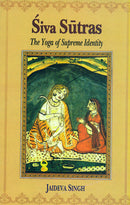Shipping & Returns Policy
Free Shipping
Shipping is Free for all articles. Prices mentioned against each artwork are the final cost to the buyer - There are no hidden costs. The choice of the Shipping carrier to be used lies with Ganges India. In case a shipment of value less than US $50 the shipment might be sent by normal Air Mail. Delivery for such shipments will normally take place between 8 to 10 days. We ship to most countries having diplomatic relations with India.
Period of Delivery
Depending on country/location delivery is expected to take approximately 4-8 business days (The normal period for delivery to US destinations is between 3 to 5 business days) However, Ganges India does not guarantee any time limit of delivery. In odd instances, a consignment may be delayed due to extraneous circumstances such as delayed Customs clearance, Flight delays, etc.
Customs Clearance
The consignment will be delivered to the buyer at his/her doorstep by the Carrier, after all customs formalities have been completed. The Carrier will be responsible for the clearance of the shipment from Customs.
The above policy is applicable to Retail Orders only.
Exceptions to the above may be noted in the following cases :
Framed Paintings : Framing requires 3 to 5 busines days, after which it will be shipped, as per our regular policy, as stated above. All Framed articles will be sent duly insured, at no extra cost to the buyer.
Books : All books showcased are subject to availablity with the publisher. In case a Book purchased is out of print, the full amount of the purchase will be refunded to the buyer.
Sarees & Custom Made Apparels: Blouse/Petticoat, customized garments etc. will require 3-4 extra days.
Returns Policy
Ganges India guarantees the quality of the products we offer. We want to assure our customers that we do not want curiosity sales, if you do not like a product, we welcome you to return it in its original condition for a full refund of the amount paid by you.
Please contact Ganges India within seven days of receipt of the item at info@gangesindia.com and specify the product code of the work to be returned. The buyer will be responsible for the return shipping and insurance costs.
The refund or exchange is processed within 48 hours of our receiving back the item.
We have no questions asked return and refund policy.


